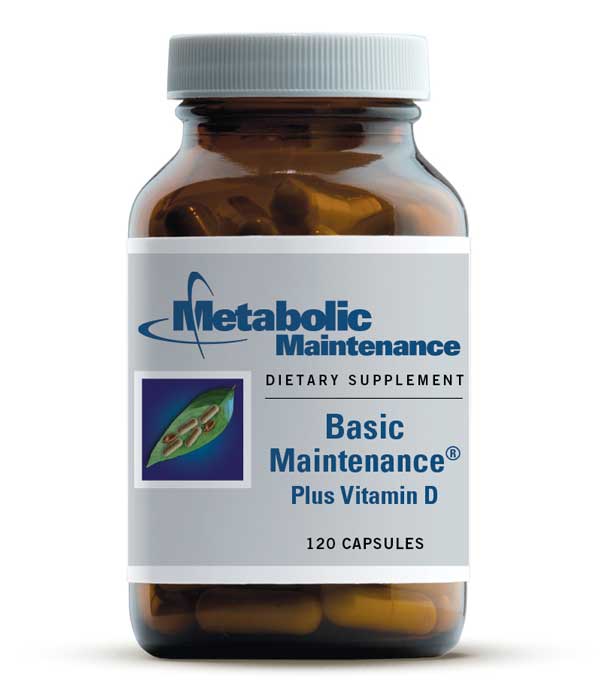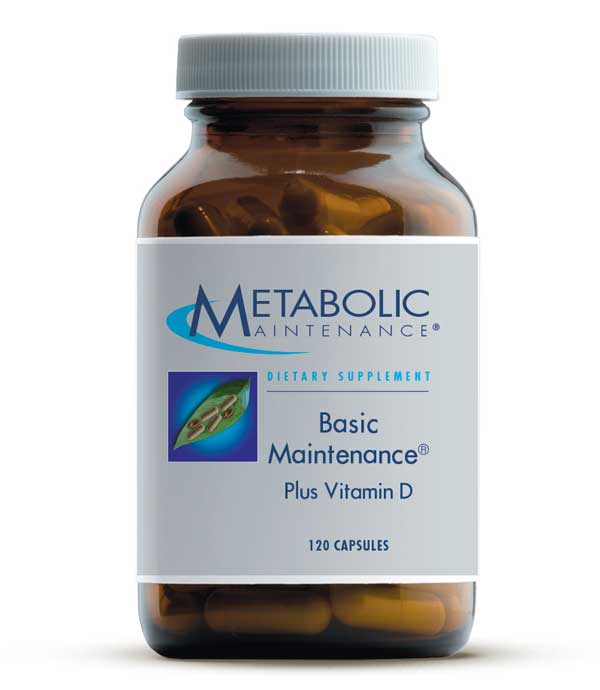Have you noticed our NEW LOOK?
Let us explain...
Although our label designs have been updated, with few exceptions, formulas of all supplements are the same. However, you may have also noticed the supplement facts on the back of the label have changed due to the FDA’s new regulations, which are based on a variety of factors. All manufactured foods and supplements will be making these same changes by 2020; We’re getting a head start....

Old Look

Updated Look
Supplement Fact Breakdown
Measurements vs. Percentages
The amounts of each component within our formulas have mostly remained the same. Because of new recommended daily intake values however, we have adjusted levels of vitamin D in a few select formulas. What has changed universally, however, are the units of measurement by which the FDA requires us to report the amount of each ingredient.
Vitamins A, D, and E used to be measured in IU (International Units), however, the size of an “IU” was different for each vitamin. IU was not a standard measurement across the board. Amounts of all vitamins will now be measured and reported in metric mass (milligrams, mg; micrograms, mcg; etc.). In addition, these new reported measurements for vitamin A and folate have been adjusted specifically to their bioactivity.
Vitamin A will now be reported in mcg RAE (Retinol Activity Equivalents). The RAE unit of measurement more accurately reflects the actual vitamin A activity of its many forms, including retinoids (e.g., retinol) and carotenoids (e.g., beta-carotene).
Folate has a new unit of measure called Dietary Folate Equivalents (DFE). Supplemental sources of folate are more potent than dietary folate, so they will have a higher DFE than folate in food. Even though the amount of folate in our formulas has not changed, you will see an increase in label claim and percent Daily Value (%DV) due to this difference in potency. To make the conversion, multiply the previous folate claim by 1.7. The following image shows how these changes appear on the new label as compared to the old.

2.
Because of the bioavailability of supplemental folate, the same 15 mg now represents a higher percentage of the FDA’s recommended daily value.

1.
Although the number has increased from 15 mg to 25 mg DFE due to the unit of measurement conversion, the amount of folate in the formula is still 15 mg.
If you would like to understand how the new units of each vitamin have been converted from old units of measurement, please use the information in the table below.
| Nutrient | Old Unit of Measure | New Unit of Measure | Conversion Equation |
|---|---|---|---|
| Vitamin A | IU | mcg RAE | ___ mg RAE/0.3 = ___ IU |
| Folate | mg | mg DFE | ___ mg DFE/1.7 = ___ mg |
| Vitamin D | IU | mg | ___ mcg x 40 = ___ IU |
| Vitamin E | IU | mg | ___ mg x 1.49 =___ IU |
Changes in Percent Daily Value (%DV)
As observable in the folate example above, the FDA has changed the total recommended daily intake (RDI) for some nutrients. Choline has also been added to the list of nutrients with a recommendation. Therefore the percent daily value (%DV) may now be higher or lower for certain nutrients on a label, even though the measured amount of that nutrient has remained the same within our supplement formula. Specifically, If the RDI for a particular nutrient has been increased and the amount in our product has remained the same, the new %DV will now be a lesser percentage than before (nutrients include vitamins C, and K). If the RDI has decreased and the amount in our product has remained the same, the new %DV will be greater than before (nutrients include vitamin A, B12, chromium). If both the RDI and the amount in our product have remained the same, but the product measurements reflect greater bioactivity (such as methylfolate DFEs) the new %DV will be greater than before.
A list of evidence-based RDI updates are detailed below.
| Nutrient | Previous RDI | Updated RDI |
|---|---|---|
| Vitamin A | 5000 IU | 900 mcg (comparable to 3000 IU) |
| Vitamin C | 60 mg | 90 mg |
| Vitamin B6 | 2 mg | 1.7 mg |
| Vitamin B12 | 6 mcg | 2.4 mcg |
| Vitamin D | 400 IU | 20 mcg (comparable to 800 IU) |
| Vitamin E | 30 IU | 15 mg (comparable to 22.4 IU) |
| Vitamin K | 80 mcg | 120 mcg |
| Thiamin | 1.5 mg | 1.2 mg |
| Riboflavin | 1.7 mg | 1.3 mg |
| Niacin | 20 mg | 16 mg |
| Folate | 400 mcg | 400 mcg DFE (comparable to 240 mcg) |
| Biotin | 300 mcg | 30 mcg |
| Pantothenic Acid | 10 mg | 5 mg |
| Calcium | 1000 mg | 1300 mg |
| Iron | 18 mg | 18 mg |
| Phosphorus | 1000 mg | 1250 mg |
| Iodine | 150 mg | 150 mcg |
| Magnesium | 400 mg | 420 mg |
| Zinc | 15 mg | 11 mg |
| Selenium | 70 mg | 55 mcg |
| Copper | 2 mg | 0.9 mg |
| Manganese | 2 mg | 2.3 mg |
| Chromium | 120 mcg | 35 mcg |
| Molybdenum | 75 mcg | 45 mcg |
| Chloride | 3400 mcg | 35 mcg |
| Sodium | 2400 mcg | 2300 mg |
| Potassium | 3500 mg | 4700 mg |
| Choline | No RDI | 550 mg |
